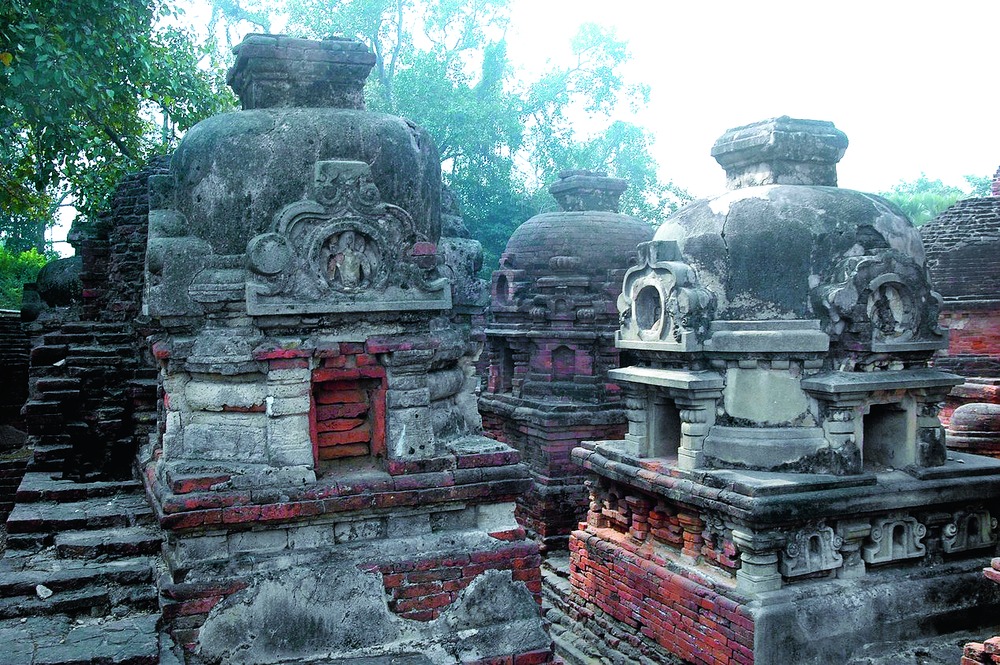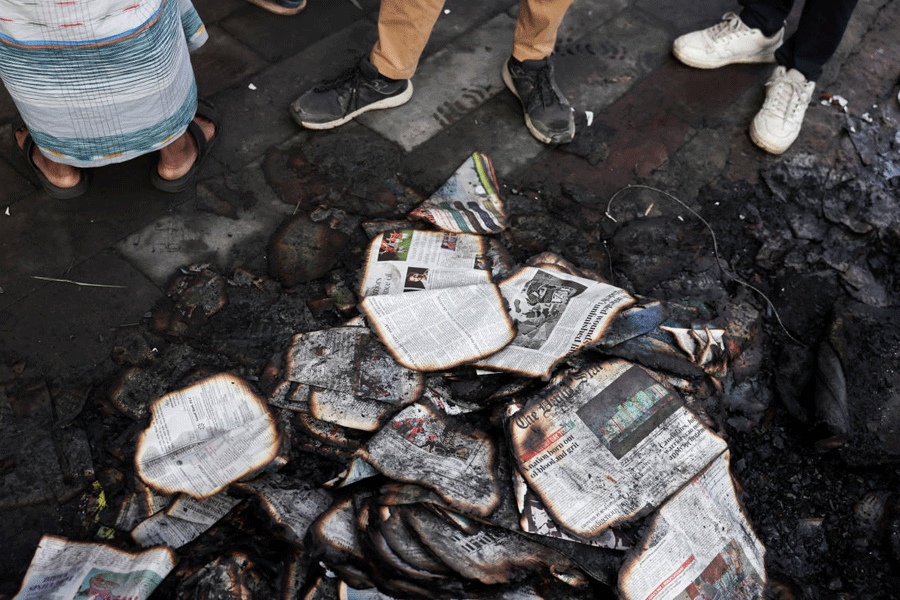
The excavated remains of the ancient Nalanda University, now an Unesco World Heritage Site, are weathering fast, worrying experts and archaeologists about their conservation.
The bricks are becoming brittle, Buddhist stucco images are in the danger of falling apart. Experts attribute these developments to salt action (deterioration because of action of salt present in clay and water). The science branch of the Archaeological Survey of India (ASI) is working hard to check the damage and preserve the ruins that were once part of the first international university in the world, which flourished between the 5th and 13th centuries.
ASI superintending archaeologist Navratna Kumar Pathak, who is the in-charge of the Patna circle, told The Telegraph that heavy weathering was a phenomenon faced by structures that are excavated after remaining buried for a long time. The sudden exposure to sunlight, heat, humidity, rainfall, wind and dust after excavation leads monuments and the material used in construction to deteriorate.

"The Nalanda University remains were excavated and brought before the world after these remained buried for several centuries," Pathak, who also heads the ASI's Lucknow circle, said. "It is facing weathering due to rain, heat and dust. Another reason behind the deterioration of the excavated remains is salt action on the remains, which is making the bricks of the monuments and stucco images brittle."
The stucco images are located at temple number three, the tallest of the excavated monuments at Nalanda. They are in the danger of being lost forever and Pathak pointed out that experts from ASI's science branch are continuously working towards comprehensive conservation of the World Heritage Site, which was excavated during the early decades of the 20th century.
According to retired regional director (north) of the ASI K.K. Muhammed, who The Telegraph spoke to in December 2016, the ancient Nalanda University was attacked first in 1198 by Ikhtiyar-uddin Mohammed Bin Bakhtyar Khilji, a general of Qutbuddun Aibak. Although plundered, the university survived but was lost in 1230 when an unidentified general of Delhi Sultanate ruler Shamsuddin Iltutmish attacked it.

"Periodical conservation work is regularly being undertaken at Nalanda to check salt action on the bricks," Pathak added. "Chemical solutions are being used for preservation. Filleting technique is used to save the stucco images from falling. We need active support of chemical preservation to stop further decay."
Pathak has researched the historic remains of the university as part of his recently obtained PhD from the Patna University on "growing concern of heritage conservation and management with special reference to integrated development of Nalanda". The archaeologist has suggested various steps for ancient Nalanda University's protection and conservation, and to also check incidences of human vandalism and graffiti on the monuments' walls.
"A tourist movement track has been planned inside the ancient Nalanda University campus so that people can move around and see more structures, without being able to touch them, climb over them and damage them. They will also not be able to throw any waste material on the monuments," he said.
In his doctorate research, Pathak has advocated roping in the "first stakeholders" or the local people to protect and develop the Nalanda remains, develop a buffer zone around the monument, and prevent uncontrolled development and commercial utilisation of the heritage area.
"A multi-disciplinary, integrated approach, including awareness programmes designed to influence public psychology and latest international conservation methods, should be adopted to protect the excavated remains for our posterity," he said.











